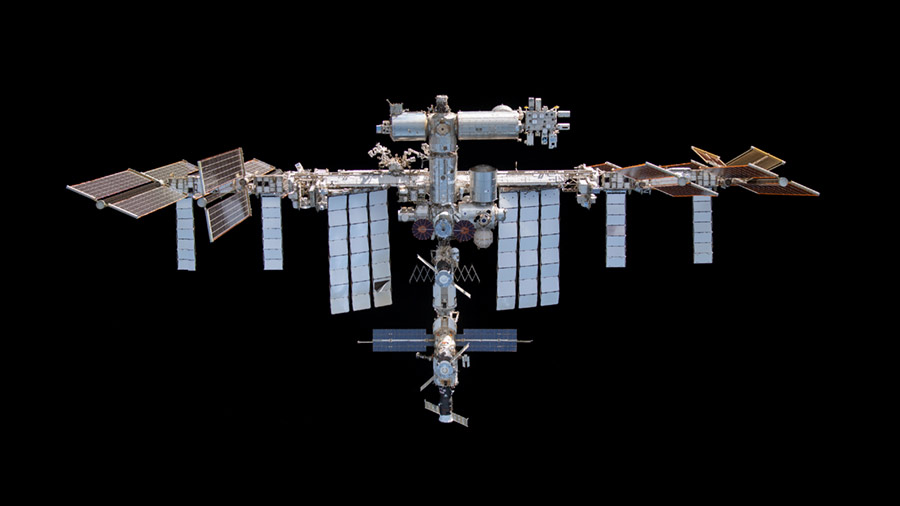
The Expedition 70 crew was in the middle of its shift aboard the International Space Station when the Axiom Mission 3 (Ax-3) crew splashed down off the coast of Florida on Friday. The seven orbital residents were exploring how microgravity affects bone cells and optical fibers while the Ax-3 crew was retrieved aboard the SpaceX Dragon spacecraft in the Atlantic Ocean near Daytona.
NASA astronauts Jasmin Moghbeli and Loral O’Hara took turns on Friday processing bone cells inside the Kibo laboratory module on Friday afternoon. The cells are housed inside a specialized habitat designed for the Microgravity Associated Bone Loss-A investigation and may provide a better understanding of space-caused bone loss and aging-related bone conditions on Earth.
O’Hara also swapped optical fiber samples being drawn inside the Microgravity Science Glovebox for the Flawless Space Fibers study. The space physics study seeks to produce optical fibers in space that are superior to those manufactured in Earth’s gravity environment. Moghbeli photographed plants growing for the APEX-10 space botany study then checked power connections on the European Drawer Rack, a research facility that can support experiments running autonomously.
Commander Andreas Mogensen of ESA (European Space Agency) stowed centrifuge-spun and incubated blood samples in a science freezer. Those samples will be analyzed later to gain insights into the adaptability of the human immune system in weightlessness. The ESA astronaut later attached sensors and breathing monitors to himself then pedaled on an exercise bike for an aerobics and fitness test.
JAXA (Japan Aerospace and Exploration Agency) Satoshi Furukawa spent his day servicing a variety of orbital plumbing gear and exercise hardware. Furukawa started the day inside the Tranquility module replacing hydraulic components inside the station’s restroom, also known as the Waste and Hygiene Compartment. In the afternoon, he went back in Tranquility and installed a new instrumentation box and set up a laptop computer to support operations on the advanced resistive exercise device which mimics the inertial load of free-weights on Earth.
Roscosmos cosmonauts Oleg Kononenko and Nikolai Chub joined each other Friday afternoon training on a computer for next week’s departure of the Progress 85 resupply ship. Earlier, Kononenko packed the Progress 85 with trash and discarded gear for disposal. Chub investigated futuristic spacecraft and robotic piloting techniques that may inform planetary missions. Flight Engineer Konstantin Borisov spent his day inside the Nauka science module cleaning smoke detectors.
Ax-3 Commander Michael López-Alegría returned to Earth on Friday with Pilot Walter Villadei and Mission Specialists Alper Gezeravcı and Marcus Wandt. The private quartet of astronauts from Axiom Space spent 18 days aboard the orbital outpost. The foursome orbited Earth for two more days after their departure before splashing down in the SpaceX Dragon Freedom spacecraft off the coast of Daytona, Florida.
Learn more about station activities by following the space station blog, @space_station and @ISS_Research on X, as well as the ISS Facebook and ISS Instagram accounts.
Get weekly video highlights at: https://roundupreads.jsc.nasa.gov/videoupdate/
Get the latest from NASA delivered every week. Subscribe here: www.nasa.gov/subscribe








